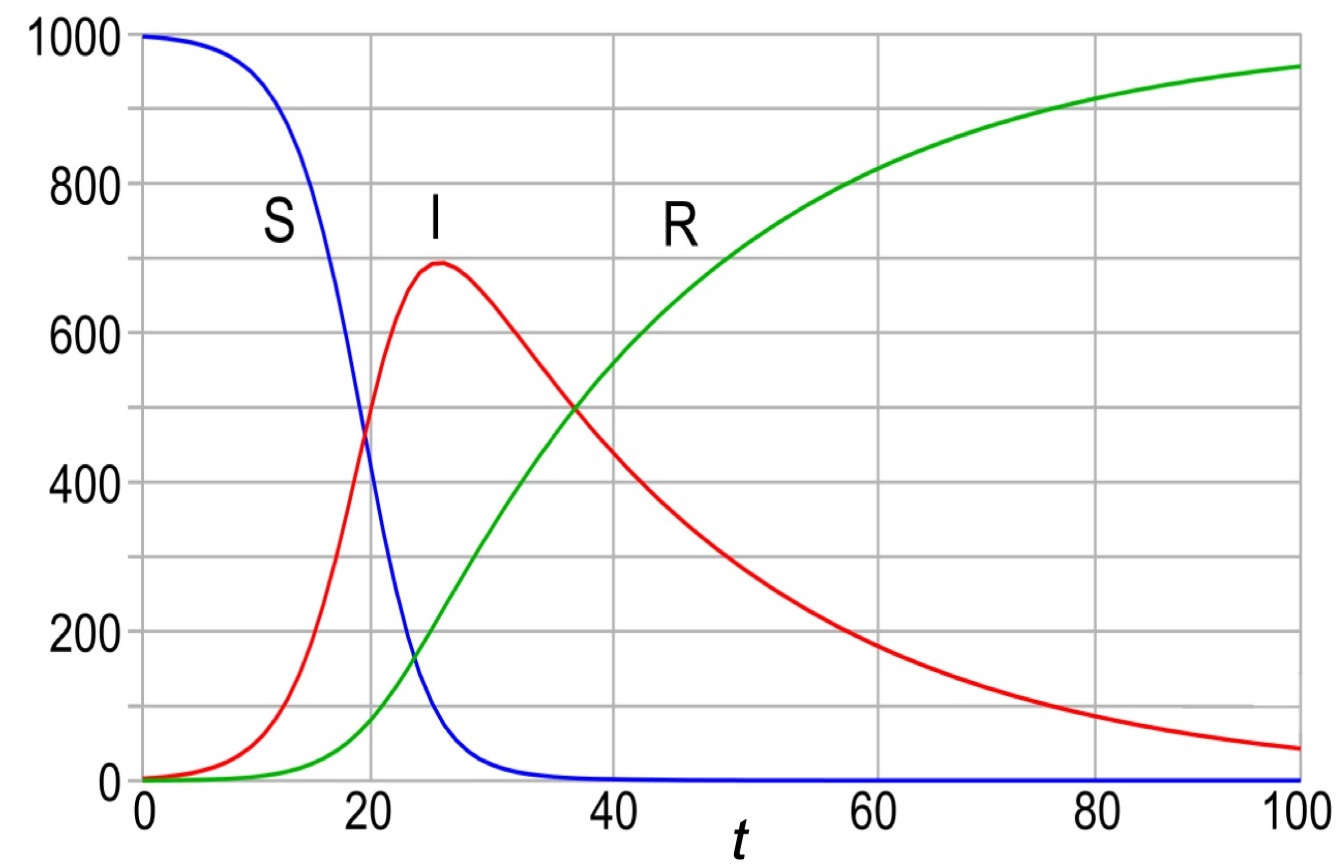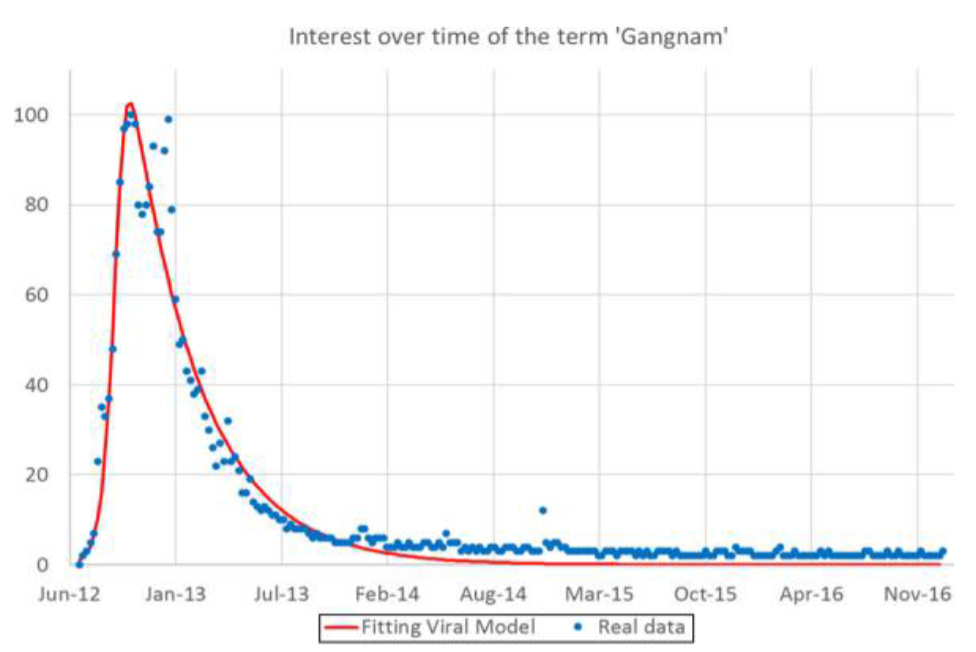The global sphere of human consciousness (the “memesphere”) is being swamped by a huge virtual wave: a set of ideas that go under the name of MAGA. Many promises but, just like all these waves, virtual or not, it will abate and go back. Above; “The Wave” by Hokusai.
Donald Trump’s political stance is showing tremendous forward momentum. As things stand now, he and his collaborators seem to be able to smash through all barriers. They carry a jumble of different and, in large part, contradictory ideas, but that’s normal in politics. The important point is that this set of ideas is recognizable in the form of simple terms such as MAGA — Make America Great Again.
“MAGA” really means nothing, or maybe too many things, but it is a typical “meme” a concept that was developed by Richard Dawkins in the 1970s. It is a pattern of the mind, a purely virtual entity, but one which acts as real viruses do: it starts small, then it grows by infecting people’s minds. Daniel Dennett correctly said that humans are “meme-infested apes.”
Memes have little or nothing to do with data and facts. All human decisions are heuristic in some degree, but some are more simplified than others. We reason by “attribute substitution,” also called “anchoring.” We base our choice on a few facts or a single one, and that has to be enough. We have to, given the limited capabilities of our minds. Then, if everyone is convinced of a certain idea (infected with the same meme), that’s sufficient reason for you to be convinced, too. In the Soviet Union, most people would be convinced that Communism was a good idea mostly because everyone said so, even though few had read Marx’s “Das Kapital.” Conversely, you can be a rabid anticommunist without knowing anything about how life was in the Soviet Union.
Memes propagate quickly and effortlessly due to our society being structured as a “fully connected” network. This indicates that while individuals may not be linked directly to each other, they are interconnected through a series of links that connect one “node” to another.
You can see that if a person located, say, at the lower right of the figure, wants to pass a meme to one at the upper left; she can do that by having the meme jump from one node (person) to another. It is the way social networks work.
But not all memes go viral, that is they spread all over the network. They do when they find an easy way to enter people’s minds. Memes are the virtual equivalent of genes in the biological world, so they behave in the same way as viruses and bacteria. A meme can be more or less “infective” and people may or may not have an “immune defense” against it.
In some cases, this defense is innate. During WWII, the Allied propaganda tried to convince German citizens to commit suicide, which was described as a heroic act. I tell the story in my recent book, “Exterminations.” The attempt had some success, but only with a small fraction of the German population. The meme was not very infective because most people are naturally immunized against the idea of killing themselves.
In some cases, people’s immunity against a meme is built over time. As a meme spreads over a population, people start “recovering” from it. They note that it fails to deliver its promises or simply cease to believe in it. At some point, the number of immune people reaches a threshold level, and the system moves to the condition called “herd immunity.” The fraction of immune people needed to attain herd immunity is not a fixed number but, in general, it is believed to be at least around 75% of the population. It needs to be higher against a strongly infective virus or meme.
For instance, at the start of the COVID-19 pandemic, most people simply had no defense from memes such as, say, “flatten the curve” or “wear the damn mask;” concepts they had never heard before. Nobody knew anything about epidemiological models, and nobody would read the Cochrane review on the effect of masks on protecting people, which found no evidence they had any.
People were anchoring their decisions on face masks on simpler observations, such as: “Are people around me wearing masks?” The spread of the meme worked by majority vote: the more people were seen wearing masks in the street, the more would wear them everywhere. It generated an ensemble of memes that we could call “Covidianism,” which included a memetic attack on the Cochrane review that convinced many people that it had been “disproved.” (*) These memes are like the devil of Luke’s gospel (8:26–39), whose name is “Legion.”
Right now, MAGAism is another set of memes rapidly spreading around since people seem to have little immune defense against it. MAGAism is based on memes that are logically absurd but heuristically perfectly sensible: say, “Since COVID-19 was a hoax, there follows that the moon landings never took place.” The MAGA memes carry with them a strong negative assessment against a series of ideas that were considered good things up to not long ago: Scientific research, climate change mitigation, sustainable economy, international law, social equity, health care for all, defending the poor, and many more. Some of these ideas strongly needed to be rethought and revised, but turning them into evil is not a good thing.
So, what’s going to happen with the MAGA meme? As with all memes, it will have a limited lifetime. When people discover that it promises a lot but maintains very little, they will build immune defenses against it. At some point, a “herd immunity” will be reached that will make further Magaist promises not to infect anyone. Then, the meme will disappear.
It may be a slow process; memes tend to follow an “Inverse Seneca Principle,” that is, they grow fast and decline slowly. But in our times, memes come and go very fast. It took decades for memes such as Fascism and Communism to wind down and completely disappear. But MAGA, like Covidianism, may not last more than Donald Trump’s term as president, and perhaps much less if he makes some huge mistake, as it may well happen.
And then? We will be back to Daniel Dennett’s definition: we are meme-infested apes. One meme is gone; another one will come. What will be the next one? By definition, a successful meme takes us by surprise, so it is unpredictable. It was the case for the COVID meme, and it is now the case for the MAGA meme. Before they took over the memesphere, nobody could imagine that they could be so virulent. All bets are off, but one thing we know: all new memes are just old memes that people forgot about, and we may be condemned to go forever in a circle, always making the mistakes of the past again.
____________________________________________________________________
A simple quantification of the spreading of memes
Memetic and viral diffusion can be described using the same, well-known, epidemiological models. The simplest one is called the SIR (susceptible, infected, recovered) model.
S’ = -k1SI
I’ = k2SI -k3I
The “I” stock determines the "R” stock. The result is a classic diagram, as follows
The infection will stop spreading at the peak of the curve, that is when I’=0. from the second equation, above. We can also say that it will stop growing for S=k3/k2. This condition is expressed in terms of the population having reached “herd immunity.” Now, k2 is proportional to how fast the infection spreads, that is, how “virulent” it is. k3 is a measure of how fast people recover. The values can be obtained by fitting the experimental data. Here is, for instance, the case of a harmless meme, the “Gangnam Style” song in a study performed by myself and my coworker, Ilaria Perissi.
Here are the results for “Coronavirus” in Italy, which shows the same kind of behavior.
Other tests using different terms and looking at different regions of the world tell us that the meme peaked after about 60 days from its appearance. This is how fast memes spread nowadays!
___________________________________________________________
(*) h/t Michael Minthorn











It's interesting that indigenous people don't seem to get as caught up in these memes. I would guess their connection and reverence for ancestors and what came before, along with connection to the earth, gives them a certain immunity. The more attached to technology and abstract ideology we become, the more susceptible we seem to be.
I don't really understand your model. The second equation (I') looks fine to me. The first one (S') not so much. In my opinion S should decrease with the cured people alone, so I don't see why S' has this S multiplying.
I played with another model as I think it should be (of course, I can be mistaken). Luckily the looks of the plot is almost exactly the same. My model is:
S’ = -k3 I
I’ = k2 (S - I) I – k3 I
R’ = k3 I
And what I plot as Susceptible is actually is (S - I). S includes the infected, and this is not what I want to plot. For the same reason, I'm putting (S - I) in the I' equation.
I assume all the cured become immune. I guess the model could be set so that only a fraction of the cured became immune. Or, for memes, that each cured could immunize more people other than himself.
Once plotted it looks almost exactly as yours. So much so, that I suspect I'm reformulating the problem in an equivalent way, still not understanding yours and why it should behave so exactly as mine.